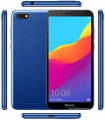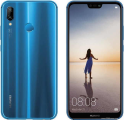
Huawei P10 128 GB Prices
Important Note.
- All prices are in Pakistani Rupee (PKR)
- Prices may vary at stores and our effort will be to provide you with the updated prices.
- Find out WhatMobile price has dropped in Pakistan by selecting Notify Price Drop button
- Find out WhatMobile has better specifications by clicking Add To Compare Button find out what Mobile has better reviews by visiting our reviews section
- Find out WhatMobile is cheaper on which retailer by clicking Compare prices from retailers button
Search Terms
- Huawei P10 128 GB
Specifications
| GENERAL | |
| 2G Network | GSM 850 / 900 / 1800 / 1900 - SIM 1 & SIM 2 (dual-SIM model only) |
|---|---|
| 3G Network | HSDPA 850 / 900 / 1700(AWS) / 1900 / 2100 HSDPA 800 / 850 / 900 / 1700(AWS) / 1800 / 1900 / 2100 |
| 4G Network | LTE band 1(2100), 3(1800), 4(1700/2100), 7(2600), 20(800), 38(2600), 39(1900), 40(2300), B41 LTE band 1(2100), 2(1900), 3(1800), 4(1700/2100), 5(850), 6(900), 7(2600), 8(900), 12(700), 17(700), 18(800), 19(800), 20(800), 26(850), 38(2600), 39(1900), 40(2300), B41 |
| Sim | Single SIM (Nano-SIM) or Hybrid Dual SIM (Nano-SIM, dual stand-by) |
| Announced | 22/02/2017 |
| Status | Available. Released 2017, March |
| BODY | |
| Dimensions | 145.3 x 69.3 x 7 mm (5.72 x 2.73 x 0.28 in) |
| Weight | 145 g (5.11 oz) |
| DISPLAY | |
| Display Size | 5.1 inches, 71.7 cm2 (~71.2% screen-to-body ratio) |
| Resolution | 1080 x 1920 pixels, 16:9 ratio (~432 ppi density) |
| MultiTouch | Yes |
| Protection | Corning Gorilla Glass 5 - Emotion UI 5.1 |
| SOUND | |
| AlertTypes | Vibration; MP3, WAV ringtones |
| LoudSpeaker | Yes |
| 3.5mm jack | Yes - 24-bit/192kHz audio - Active noise cancellation with dedicated mic |
| MEMORY | |
| CardSlot | microSD, up to 256 GB (uses SIM 2 slot) |
| Internal | 128 GB, 6 GB RAM |
| DATA | |
| GPRS | Yes |
| EDGE | Yes |
| Speed | HSPA, LTE |
| WLAN | Wi-Fi 802.11 a/b/g/n/ac, dual-band, DLNA, WiFi Direct, hotspot |
| Blue Tooth | 4.2, A2DP, LE |
| NFC | Yes |
| USB | 2.0, Type-C 1.0 reversible connector |
| CAMERA | |
| Camera Primary | Dual: 12 MP (f/2.2, PDAF, OIS) + 20 MP, Leica optics, 2x lossless zoom, phase detection and laser autofocus, dual-LED dual-tone flash |
| Camera Features | Geo-tagging, touch focus, face detection, HDR, panorama |
| CameraVideo | 2160p@30fps, 1080p@60fps |
| CameraSecondary | 8 MP, f/1.9 |
| FEATURES | |
| Processor Cores | Octa-Core |
| OS | Android 7.0 (Nougat), planned upgrade to Android 8.0 (Oreo) |
| CPU | Octa-core (4x2.4 GHz Cortex-A73 & 4x1.8 GHz Cortex-A53) |
| Sensors | Fingerprint (front-mounted), accelerometer, gyro, proximity, compass |
| Messaging | SMS(threaded view), MMS, Email, Push Mail, IM |
| Browser | HTML5 |
| Radio | No |
| GPS | Yes, with A-GPS, GLONASS, BDS, GALILEO |
| Colors | Mystic Silver, Rose Gold, Graphite Black, Dazzling Gold, Dazzling Blue, Greenery |
| Others | - Fast battery charging - XviD/MP4/H.265 player - MP3/eAAC+/WAV/Flac player - Document viewer - Photo/video editor |
| BATTERY | |
| Battery | Non-removable Li-Ion 3200 mAh battery |
| MISC | |
Reviews
27/02/2017 - 3:15pm

The blindfolds have been removed and the biggest handset makers are finally taking the wraps off their flagship Android smartphones for 2017. Two of the biggest announcements so far have been the Huawei P10 and the LG G6.
Both are 5in+ beasts and both will be competing for your pocketbook. But which, in the end, deserves your money. We take a look at both the Huawei P10 and the LG G6 to see how each stacks up. Which one has the better display? Which has the faster processor and RAM? Which looks cooler? Let’s find out.
Huawei P10 vs LG G6: Specs
Here’s the specs for the Huawei P10:
- Display: 5.1in display with a 1920×1080-pixel resolution at 432ppi
- Dimensions: 145.3 x 69.3 x 7 mm
- Weight: 145 grams
- Storage: 64GB, plus support for microSD cards up to 256GB
- Memory: 4 GB RAM
- Processors: Kirin 960 2.4GHz 64-bit Octa-core processor
- Front camera: 8 MP
- Rear camera: Dual 20 + 12 MP
- Battery life: 3200 mAh
- Colors: Mystic Silver, Rose Gold, Graphite Black, Dazzling Gold, Dazzling Blue, Greenery
And here’s the specs for the LG G6:
- Display: 5.7in display with a 2880×1440-pixel resolution at 564ppi
- Dimensions: 148.9 x 71.9 x 7.9mm
- Weight: 163 grams
- Storage: 32 or 64GB, plus support for microSD cards up to 256GB
- Memory: 4 GB RAM
- Processors: Qualcomm Snapdragon 821
- Front camera: 5 MP
- Rear camera: Dual 13 MP
- Battery life: 3300 mAh
- Colors: Astro Black, Ice Platinum, Mystic White
Both phones come in 64GB storage options, but the G6 also comes in a lower 32GB option (not that anyone should opt for such low storage). All seems even, so far, right? And it is as both phones also supports storage expansion via the microSD card slot up to 256GB in size.
When it comes to RAM, 4GB is what you get with either phone, no matter what storage size. As for processors, the P10 features Huawei’s new Kirin 64-bit Kirin 960 2.4GHz 64-bit Octa-core processor. As for the G6, you get Qualcomm’s Snapdragon 821. Which is better? In all the real world tests I’ve seen they’re about equal.
When it comes to battery, the G6 eeks out just a bit more battery power at 3300 mAh versus the P10’s 3200 mAh battery. Still, expect virtually the same battery life for each device, since the larger battery in the G6 needs to power a higher resolution display.
Huawei P10 vs LG G6: Design & Build
I’m a big fan of the P10 with its precision-engineered aluminum and ceramic body and its good selection of color options.
It also features a new textured back finish the company calls "hyper diamond cut” on select models. In truth, however, it’s really hard to compare the body designed of flagships nowadays as most feature all-metal or aluminum bodies, as the G6 does as well.
What is no surprise is the P10 is 0.9mm thinner than the G6. The almost-1mm thickness difference is because the G6 has the physically larger display and I guess LG couldn’t find a way to flatten the larger battery the G6 needs to power it.
Huawei P10 vs LG G6: Display
We come to the first HUGE difference between the two when we talk displays.
The Huawei P10 has the smaller 5.1in display with a resolution of 1920×1080-pixel at 432ppi. It’s a nice display, sure, but when you compare it to the G6’s 5.7in beast of a display with 2880×1440-pixels at 564ppi, well, the contest is over. The G6 hands down has the better display.
Huawei P10 vs LG G6: Cameras
But the P10 strikes back in a BIG WAY when you get to the camera department. The P10 features a dual-camera Leica lens in its rear camera. That’s right, there are TWO lenses in the back camera, one 20MP and one 12MP, leading to pictures that approach DSLR quality. The G6 features a dual lens camera as well, but it only features two 13MP lenses. No question about it, you will get MUCH better pics using the P10’s camera.
As for front facing cameras, the P10 beats the G6 there too. The P10 has an single 8MP front lens, while the G6 is stuck with a single 5MP lens front camera.
Huawei P10 vs LG G6: Verdict
Yeeesh! This is a very VERY tough call. In many ways the LG G6 wins: it’s got better storage options and a MUCH better display. But the P10 is incredibly compelling thanks to its superior dual lens camera system. Your pics will be better than ever thanks to the P10’s 20MP and 12MP dual lens rear camera.
So which to choose? My advice is if gaming and everyday app-usage is the most important thing to you in a phone, opt for the LG G6 over the P10. However, if picture taking is something you primarily use your smartphone for, grab the P10. Pics don’t get better than that (without a DSLR).
Write Your Own Review
My Recent Reviews
- Be first to post review for this product.
comments powered by Disqus








.jpg)


.jpg)
.jpg)
-16-GB.jpg)

-32-GB.jpg)













